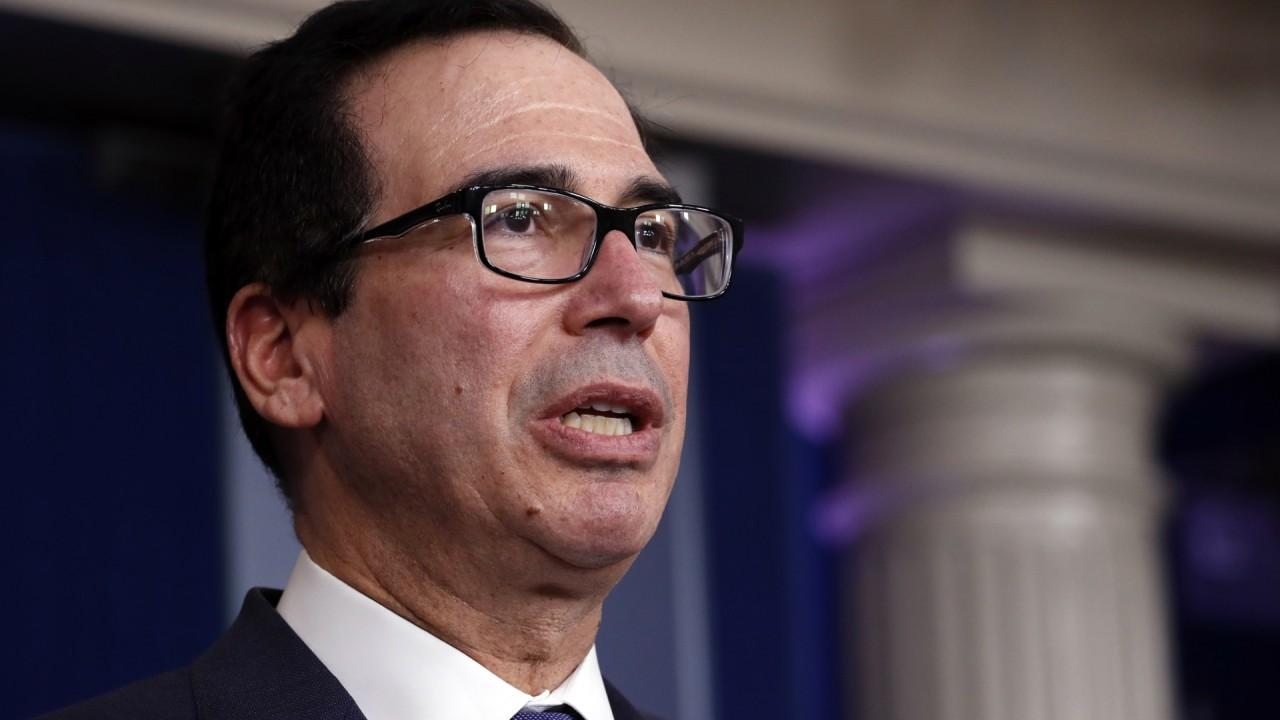Coronavirus stimulus checks: Who gets money and when?
Everything you need to know about the administration’s direct cash relief
Get all the latest news on coronavirus and more delivered daily to your inbox. Sign up here.
The Trump administration and lawmakers are sending many American households direct cash relief amid the economic fallout from the coronavirus outbreak.
The payments are $1,200 per adult for those with adjusted gross incomes of up to $75,000. The threshold for married couples is $150,000 – they are eligible for $2,400 and $500 per child.
The relief is intended to hold Americans over until the U.S. economy is up and running again – the federal government and state governments have made the decision to shut down many businesses in an attempt to limit human-to-human contact. As a result, many people have either found themselves without a job or with reduced hours.
NEW YORKERS FLEEING CORONAVIRUS HOTSPOT NEED TO SELF-ISOLATE, WHITE HOUSE SAYS
Here’s what you need to know about the direct cash relief:
Eligibility
In order to receive the benefit, an individual must have a work-eligible Social Security number. He or she cannot be the dependent of another taxpayer.
The relief applies to both people without incomes and those whose sole income is derived from a benefit program, like Social Security.
What you need to do
The IRS is administering the program and will determine eligibility based on your 2019 tax return. If that has not been filed, the agency will look at your 2018 paperwork. That includes individuals who file returns for the Earned Income Tax Credit but do not otherwise pay taxes.
The individual is not expected to need to take any action.
If, however, you are part of a group that does not typically file tax returns, the agency is asking for personal information to be submitted via an online tool. Social Security beneficiaries will receive their payments automatically, as will veterans and their beneficiaries. Supplemental Security Income recipients will only need to upload information if they have dependent children.
If you have not filed for either 2018 or 2019 (and you were supposed to), the IRS is urging you to do so as soon as possible in order to receive the payment. The money will be available throughout the remainder of 2020.
CORONAVIRUS PROMPTS TRUCKERS TO ASK TRUMP FOR HELP AS CHALLENGES MOUNT, DEMAND CLIMBS
Phase-out rate
The phase-out rate is $5 for every $100 above the threshold.
For example, for individuals earning $75,500, the check would be reduced to $1,175.
The benefit phases out entirely for those earning more than $99,000 ($146,500 for heads of household with one child and $198,000 for joint filers without children).
CLICK HERE TO READ MORE ON FOX BUSINESS
Timing
Treasury began making direct deposits into millions of Americans' accounts the week of April 13.
The IRS will begin mailing paper checks the week of April 20.
If the agency does not have your direct deposit information, the Treasury Department has a web-based portal for individuals to provide it so you can receive the checks immediately rather than waiting for it in the mail.
About 15 days after the payment is made, the taxpayer will get a notice in the mail explaining the payment and providing a phone number to call if it was not received.
For more information on the payments, you can visit the IRS' website.
GET FOX BUSINESS ON THE GO BY CLICKING HERE
This article has been updated.

